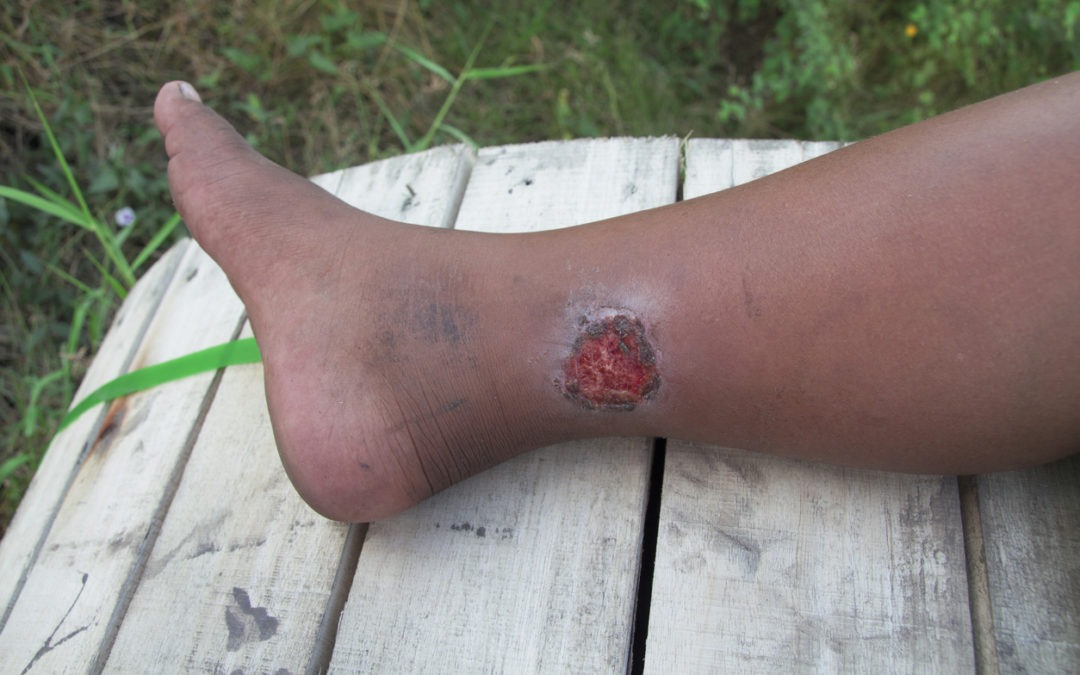Small cuts or scratches on your leg should heal within a few days. If you notice that a wound on your leg is extremely slow to heal or keeps reappearing, it could be a sign that you are suffering from venous ulcer disease.
A wound caused by venous ulcer disease can cause serious problems if it is left untreated. Learning more about this vascular disease can help you identify when you should seek medical attention so you can avoid any life-altering complications.
How to Prevent Venous Stasis Ulcers from Getting Worse
Before you can learn about how to prevent venous ulcers from getting worse, you have to learn more about why they happen.
Tiny valves, known as venous valves, are found throughout the veins of the leg. These valves are responsible for helping to regulate the pressure of the blood that flows through the veins.
According to Johns Hopkins Medicine, in a healthy individual, the venous valves work to reduce the blood pressure in your legs when you are engaging in certain types of activities, such as walking or running. For a person with venous ulcer disease, the valve is unable to work properly which can cause problems.
The malfunctioning valve prevents blood from properly flowing. Since the blood is unable to be pumped back to the heart, it pools in the veins of the leg which causes an increase in blood pressure. The pressure causes a slow stretching of the walls of the veins. Eventually, the stretched vein walls become so weak that the blood leaks out of veins and enter the skin tissue of the leg.
Over time, the accumulation of blood in the tissue prevents the skin tissue from getting oxygen and proteins it needs to stay healthy. Without the proper oxygen and nutrients, the tissue will start to breakdown. The breakdown of the tissue causes the skin to die and ulcers to form.
If you wish to prevent venous ulcers from getting worse, you must seek help from a vein specialist who will help you properly treat them.
Treatments for Venous Leg Ulcers
Treatment needs to be quickly sought for venous leg ulcers if complications are to be avoided. The longer you wait to seek venous ulcer treatment, the more damage will happen as a result of the ulcer’s inability to properly heal.
Treating venous leg ulcers is a two-step process. First, you must prevent the open sore from becoming infected. Preventing infection allows the healing process to begin.
Infections are prevented by doing the following:
- Debridement – removing any dead or diseased tissue from around the wound
- Administration of antibiotics
- Properly dressing the wound – the wound is wrapped in medical gauze or dressing. The dressing or gauze is replaced every week or so.
- Surgical skin grafts – extreme cases where the wound has caused extensive damage
The second step is to treat any underlying condition that is causing the venous ulcer disease. A vein specialist can help you determine what is causing the venous ulcers and come up with a customized treatment plan for you.
How Long Does it Take for Venous Ulcers to Heal
The length of time it takes for a venous ulcer to heal will depend upon how soon you seek treatment and the size of the wound. Smaller wounds that were quickly treated usually fully heal in 12 weeks. Larger wounds can take over a year to heal.
To help a venous ulcer heal faster, you will want to do the following:
- Follow all instructions provided by your healthcare provider or vein specialist
- Keep the leg elevated when you are not walking around
- Perform exercises, such as moving your feet up and down and circling your ankles, which will keep your legs moving when you are resting
- Remain active by walking a little each day
Have a leg wound that won’t heal and live in the Long Island area? Contact us to schedule an appointment to speak with a vein specialist. Meet our vein physicians in New York who will be helping you properly treat your ulcer if you seek treatment at Schulman Vein and Laser Center.

